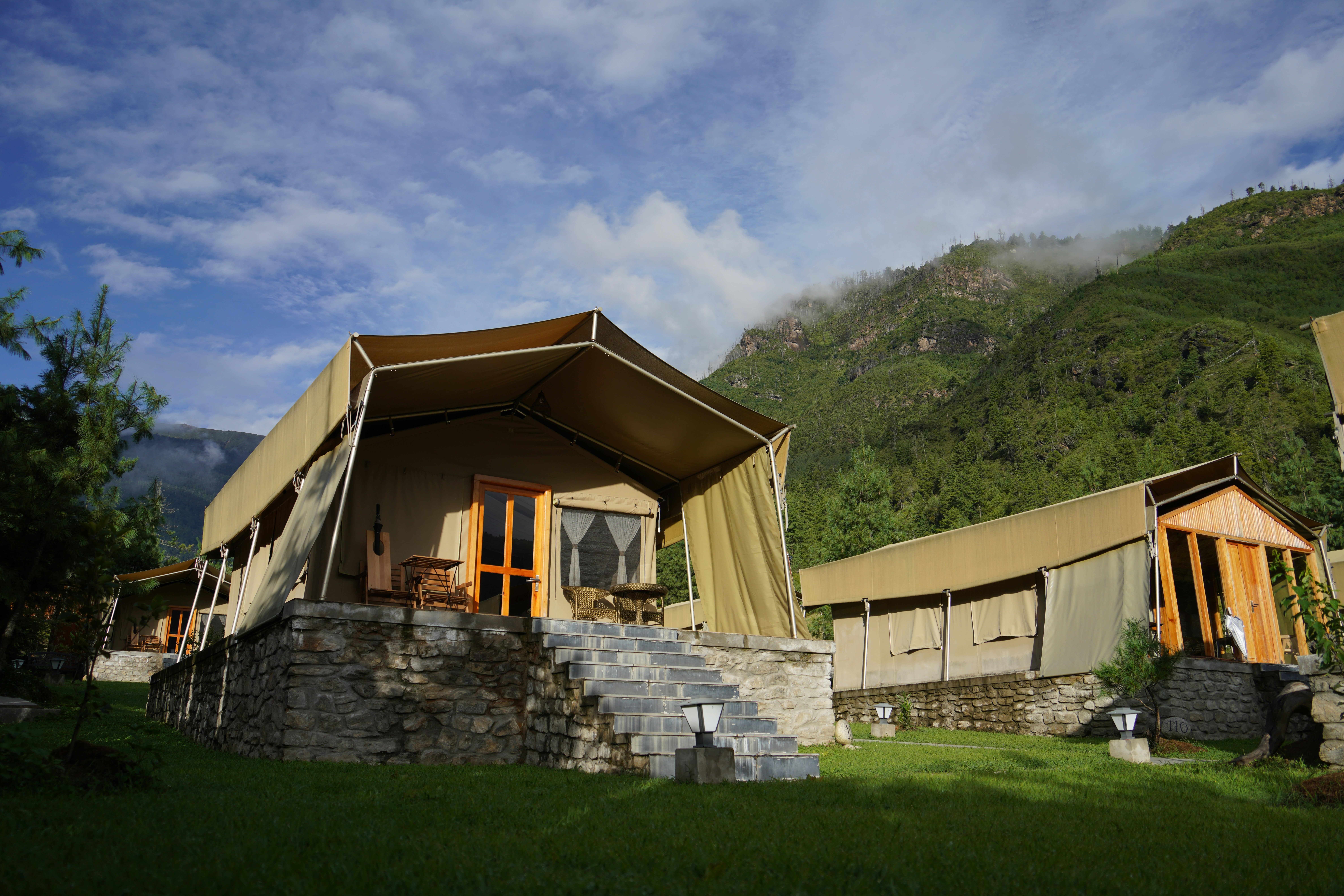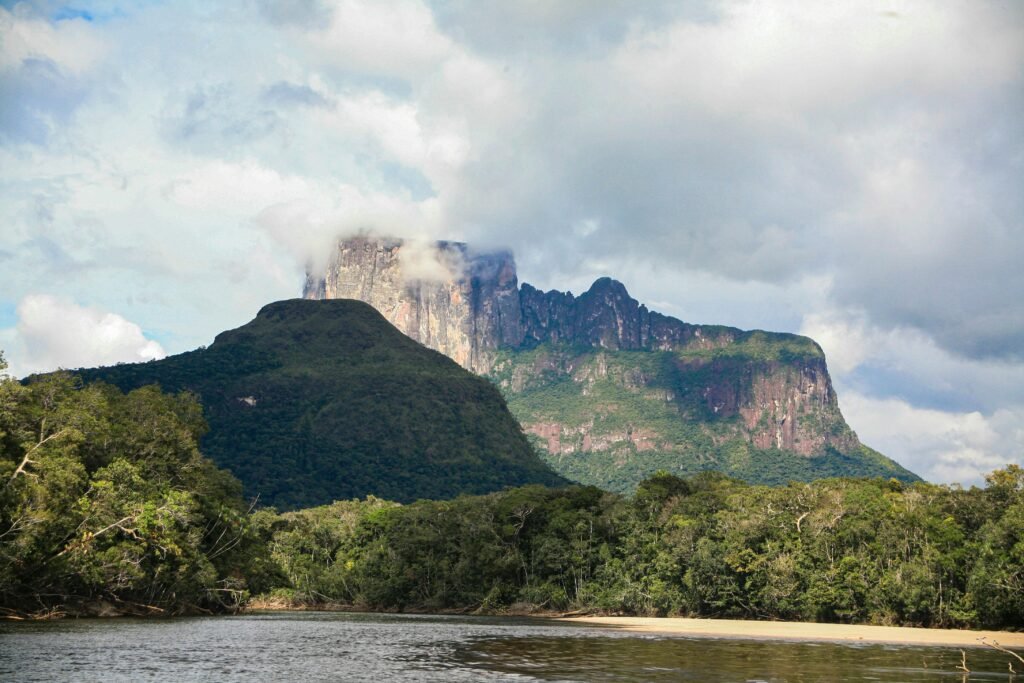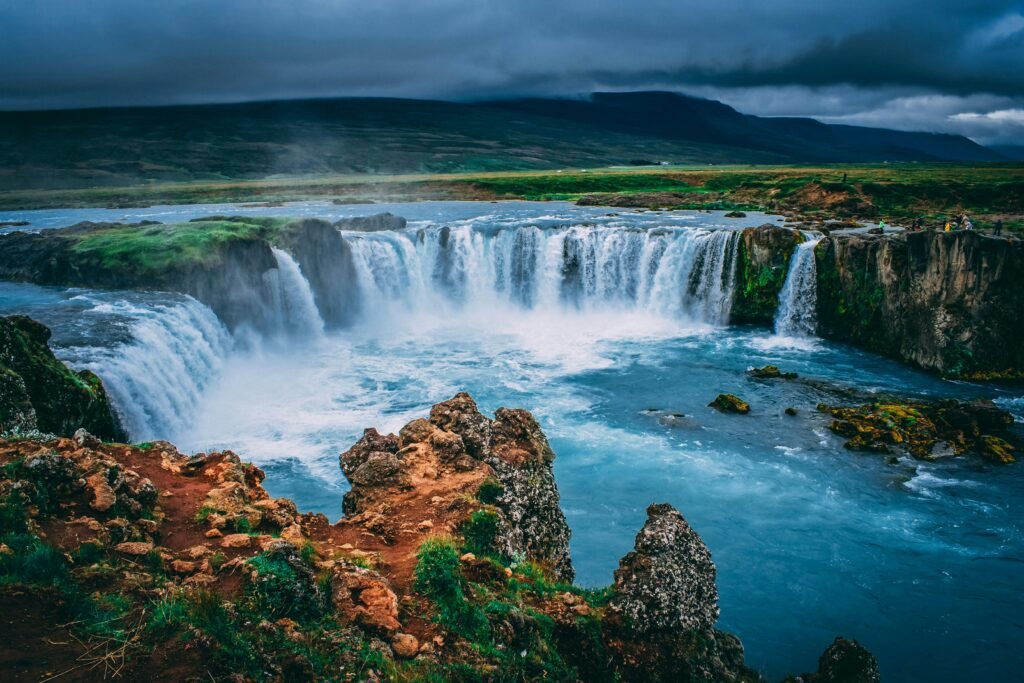Introduction to Gran Sabana

Gran Sabana, located in the southern region of Venezuela, is a breathtaking expanse characterized by its vast savannahs, unique ecosystems, and rich cultural diversity. This magnificent area is a part of the larger Canaima National Park, a UNESCO World Heritage site, which serves as home to some of the most impressive landscapes on the planet, including the iconic Tepui mountains. The geographical features of Gran Sabana, from its rolling grasslands to dramatic cliffs, create an exceptional backdrop for exploration and adventure.
The ecosystems found in Gran Sabana are not only diverse but also thrive in a unique climate, making the region an oasis of biodiversity. The flora and fauna are adapted to the challenging conditions, supporting a variety of species that can be found nowhere else in the world. Many visitors to Gran Sabana are drawn by the opportunity to witness these rare species in their natural habitats. The region is also culturally rich, home to various indigenous tribes who have lived in harmony with the environment for centuries, providing an additional layer of depth to the travel experience.
As an emerging travel destination, Gran Sabana offers an array of activities suited for adventure enthusiasts and nature lovers alike. Trekking, bird-watching, and exploring waterfalls are just a few of the experiences that attract visitors to this stunning region. For those seeking tranquility and breathtaking scenery, Gran Sabana provides a chance to immerse oneself in nature’s beauty. Overall, the combination of breathtaking landscapes, ecological significance, and cultural richness makes Gran Sabana an unforgettable destination for travelers.
The Unique Geography of the Tepui Mountains

The Tepui Mountains, iconic flat-topped sandstone formations, dominate the landscape of the Gran Sabana region in Venezuela. These majestic structures rise steeply from the savannah, often enveloped in mist, creating an ethereal appearance that has captivated explorers and scientists alike. Their geological history dates back over 1.5 billion years, making them some of the oldest geological formations on Earth. The layers of quartzite and sandstone that constitute these mountains have endured extensive erosion, leading to their characteristic flat tops and steep gorges. This unique topography has earned them the nickname ‘the lost worlds,’ as they resemble isolated islands amidst a sea of grasslands.
The isolation of Tepuis has significantly influenced local biodiversity. Each Tepui harbors distinct ecosystems, home to numerous endemic species that have evolved separately from the surrounding flora and fauna. Some plants and animals found in these regions are not found anywhere else on the planet. For instance, the peculiar carnivorous plants that thrive on the nutrient-poor soils of the Tepuis exemplify the remarkable adaptations that have emerged in this unique setting. Furthermore, the Tepui environment offers distinct climatic conditions, with cooler temperatures and higher humidity than the surrounding savanna. This local climate variation allows a diverse array of life to flourish in isolation, creating microhabitats suited to specialized organisms.
The impact of the Tepui Mountains on the climate and ecosystems of the Gran Sabana extends beyond their boundaries. They act as natural barriers that influence wind patterns and precipitation, contributing to the lush vegetation that thrives in their shadow. The intricate interplay between the Tepui formations and the surrounding savannah underscores their importance, not only as geological formations but also as integral components of the region’s ecological framework. Their grandeur and ecological significance make the Tepui Mountains a vital subject of study for conservationists and climate scientists alike.
Cultural Heritage and Indigenous Communities
The Gran Sabana region, characterized by its breathtaking landscapes and unique geological formations, is also home to a rich tapestry of cultural heritage. This area is primarily inhabited by various Indigenous communities, including the Pemon and the Ye’kwana, who possess a deep connection to their environment. Their traditions, languages, and lifestyles are intricately woven into the fabric of the Gran Sabana, illustrating a harmonious relationship with nature.
These communities maintain their cultural identities through the use of traditional languages, such as Pemon and Ye’kwana, which are vital for preserving their history, stories, and collective knowledge. The passing down of oral traditions is commonplace, and storytelling plays a significant role in their cultural practices. Moreover, many of the Indigenous peoples of Gran Sabana are known for their craftsmanship, particularly in weaving and pottery, which reflects their heritage and the natural resources available to them.
Interaction with their unique landscape is fundamental to the lifestyles of Indigenous groups in this region. They often use age-old techniques for agriculture, hunting, and gathering, demonstrating an intimate understanding of the local ecosystem. For instance, traditional practices are employed to cultivate crops that are well-adapted to the conditions of the Gran Sabana, ensuring food security while preserving biodiversity.
As tourism continues to grow in Gran Sabana, it becomes increasingly important to promote cultural preservation and responsible travel practices. Visitors are encouraged to engage with Indigenous cultures in respectful ways, ensuring that their activities do not disrupt the traditional ways of life. This can include supporting local crafts, participating in guided cultural tours led by Indigenous peoples, and learning about their traditions. Such interactions not only enrich the travel experience but also contribute to the sustainability of these communities and their heritage.
Hiking Trails and Adventure Opportunities

The Gran Sabana region, with its stunning landscapes and unique geological formations, offers a plethora of hiking trails suitable for adventurers of various skill levels. Two of the most renowned hikes in the area are the treks to Roraima and Kukenan Tepui, both of which provide breathtaking views and unforgettable experiences.
The hike to Mount Roraima is a popular choice among trekkers. This iconic table-top mountain stands at 2,810 meters above sea level and is known for its vast flat summit, where visitors can explore a unique ecosystem. The average duration of the trek to Roraima is approximately 6 days, covering a distance of about 34 kilometers from the nearest starting point. Hikers can expect diverse terrain, ranging from lush rainforests to rocky paths and challenging ascents. It is essential to be prepared for sudden weather changes and to pack essentials such as waterproof gear and sturdy hiking boots.
Kukenan Tepui, which is slightly less traveled compared to Roraima, is also a remarkable hiking destination. The round trip to Kukenan typically takes about 4 days, covering approximately 25 kilometers. The challenge is more moderate, with opportunities to witness stunning waterfalls and unique flora along the way. Hikers should be aware that while the hike is beautiful, the trails can be steep and require a certain level of fitness.
When planning a hiking adventure in the Gran Sabana, proper preparation is crucial. Hikers should carry sufficient water, high-energy food, and a well-equipped first-aid kit. It is also advisable to hike with experienced guides, especially for less-traveled paths, as this can enhance safety and provide deeper insights into the local environment. Climbers must be mindful of their physical limits and prepare for an exhilarating yet physically demanding trek into these spectacular landscapes.
Exploring the Majestic Waterfalls

The Gran Sabana region, with its striking landscapes, is home to some of the most breathtaking waterfalls in the world. Among these, **Salto Ángel** stands out, holding the title of the tallest waterfall globally, cascading an awe-inspiring 979 meters (3,212 feet) down the side of the Auyán-tepui mountain. This stunning natural wonder is not only a sight to behold but also a destination for adventurous travelers seeking an unforgettable experience.
Visiting Salto Ángel requires some planning, as it is situated within the country’s Canaima National Park. The most common way to reach the waterfall is through guided tours, which typically start from the town of Canaima. These tours generally include boat rides along the rivers, culminating in an exhilarating trek through the lush jungle, allowing visitors to immerse themselves in the stunning natural scenery. To maximize the experience, it is recommended to visit during the rainy season (June to December), when the waterfall is at its fullest, showcasing its powerful beauty.
Aside from Salto Ángel, the Gran Sabana region is dotted with numerous other waterfalls, including **Salto Kawi**, **Salto el Sapo**, and **Salto de La Llovizna**. Each of these waterfalls offers unique experiences, from swimming opportunities in natural pools to picturesque vantage points for photography. Travelers are encouraged to bring swimwear, as many visitors delight in taking a refreshing dip in the cool waters beneath the falls. It is also beneficial to hire local guides who can provide insights into the flora and fauna of the region while ensuring a safe and enriching experience.
Overall, exploring the majestic waterfalls of Gran Sabana provides not only breathtaking views but also a wealth of adventure and engagement with nature. The combination of thrilling activities, serene settings, and the exceptional beauty of the waterfalls makes this region a top destination for nature lovers and adventure seekers alike.
Eco-Lodges: Sustainable Stay Options
Eco-lodging has emerged as a pivotal aspect of sustainable tourism in Gran Sabana, as these accommodations prioritize environmental conservation while offering travelers a unique connection to nature. By choosing eco-lodges, visitors support sustainable practices that help preserve the mesmerizing landscapes and diverse ecosystems of the region, including the iconic Tepui Mountains. These establishments often employ renewable energy sources, utilize sustainable building materials, and implement waste reduction strategies, making them integral to the environmental conservation efforts in Gran Sabana.
Among the noteworthy eco-lodges, Posada Tepuy stands out due to its responsible tourism ethos and engagement with indigenous communities. This lodge not only provides comfortable and rustic accommodation but also actively involves guests in local cultural experiences and conservation initiatives. Travelers can immerse themselves in the traditions of the Pemon people while enjoying guided treks and bird-watching excursions led by knowledgeable local guides.
Another commendable choice is the Waku Lodge, which offers a blend of luxury and sustainability, set amid a stunning backdrop of natural beauty. The lodge features bungalows constructed from eco-friendly materials and employs onsite practices to reduce its ecological footprint. Visitors at Waku Lodge can participate in organic farming and explore the pristine environment through eco-tours, enhancing both their travel experience and understanding of local biodiversity.
For those seeking a more rustic option, Casa Gran Sabana provides basic yet comfortable accommodations surrounded by breathtaking landscapes. This eco-lodge encourages interactions with the local environment and culture, often arranging guided hikes and community visits that foster an appreciation for the region’s rich heritage.
In summary, eco-lodges in Gran Sabana are not merely places to stay; they play a significant role in preserving the natural environment, promoting cultural engagement, and enhancing the overall travel experience. By finding a balance between comfort and sustainability, these lodges harmonize luxury with responsible tourism, making them ideal choices for the conscientious traveler. Choosing eco-friendly accommodations enables visitors to contribute positively to the conservation efforts while exploring the enchanting landscape of Gran Sabana.
Essential Travel Tips for Visitors
When planning a trip to the Gran Sabana region and the breathtaking Tepui Mountains, several key considerations can enhance your travel experience. To fully appreciate the beauty and culture of this stunning destination, timing, preparation, and respect for local customs are paramount.
The best time to visit Gran Sabana is during the dry season, which typically spans from November to April. Weather conditions during this period are generally more favorable, allowing for clear skies and reduced rainfall, which is ideal for sightseeing and outdoor activities. Nonetheless, it’s advisable to check local weather forecasts before your trip, as conditions can vary.
Traveling to Gran Sabana requires proper documentation. Ensure that your passport is valid for at least six months beyond your intended stay. Depending on your nationality, you may also need a visa to enter Venezuela. It is wise to have multiple copies of essential documents, including your passport, visa, and travel insurance details, easily accessible in case of emergencies.
Your health should also be a priority. It is recommended to consult with a healthcare professional regarding necessary vaccinations, as certain diseases such as yellow fever and mosquito-borne illnesses may be prevalent in the region. Carry a basic first aid kit, including items like insect repellent and antihistamines, to prepare for potential health concerns.
When packing for your journey, ensure you have suitable clothing for the varying temperatures. Layering is advisable since daytime temperatures can be warm, while nights may be considerably cooler, especially at higher altitudes. Sturdy hiking boots, a rain jacket, and sun protection—such as hats and sunscreen—are also essential.
Accessibility can be a challenge in some areas of Gran Sabana, so be prepared for rugged terrain. Consider bringing items such as a backpack for day hikes, water purification tablets, and snacks to sustain your energy. Respect for local customs and environment is equally important; always practice responsible tourism by following local guidelines and showing consideration towards indigenous communities.
Safety Considerations While Exploring
Traveling to the Gran Sabana and Tepui Mountains offers incredible experiences, yet it is crucial to prioritize safety while exploring this stunning region. The Gran Sabana, known for its breathtaking landscapes and diverse wildlife, requires travelers to be well-prepared and informed about the safety challenges that might arise in such remote areas.
One of the foremost considerations involves wildlife encounters. The Gran Sabana is home to a variety of animals, some of which may pose risks. Visitors should familiarize themselves with local fauna and adhere to guidelines for avoiding close encounters. It is advisable to maintain a respectful distance from wildlife, avoiding any feeding or interactions that could lead to danger. Carrying bear spray or similar deterrents may be prudent for those trekking through areas where larger animals are spotted.
Navigating trails in the region also necessitates careful planning. The interconnected trails can lead through diverse terrains, which may be challenging for inexperienced hikers. It is recommended to carry a reliable map and compass or a GPS device, as well as wearing appropriate footwear. The presence of ongoing rains can make some paths slippery, thus choosing the right timing for hiking is essential to ensure safety.
Traveling with a knowledgeable guide is paramount, especially in the more remote sections of the Gran Sabana. Guides are familiar with the terrain, understand local wildlife behaviors, and maintain awareness of potential hazards, including sudden weather changes or difficult trail conditions. Furthermore, having emergency contacts prepared beforehand, including local park services or medical facilities, can be invaluable in case of unforeseen situations.
Ultimately, while the Gran Sabana is a captivating destination, ensuring safety involves preparation, awareness, and judicious decision-making. By taking these precautions, visitors can confidently enjoy the majestic beauty of the Tepui Mountains and the surrounding landscape.
Conclusion
The Gran Sabana region, with its majestic Tepui mountains and rich cultural heritage, represents an extraordinary natural wonder that captivates the heart and mind. As one gazes upon the towering sandstone plateaus that seem to scrape the sky, it becomes clear that this landscape is not just a physical geography—it’s a tapestry woven from the threads of ancient stories, vibrant cultures, and lush ecosystems. Exploring the Gran Sabana allows travelers to connect deeply with the natural world, while also appreciating the diverse cultural narratives of the indigenous peoples who inhabit this magnificent area.
This breathtaking destination beckons adventurers from all corners of the globe, urging them to delve into its untamed beauty. The scenic waterfalls, the vast savannahs, and the unique wildlife create an enchanting backdrop that invites exploration and discovery. Travelers have the opportunity to hike the trails, embark on exhilarating expeditions, or immerse themselves in the local customs and traditions, all of which contribute to a memorable experience. Furthermore, the tranquility of the environment fosters a sense of peace and reflection, allowing visitors to leave behind the hustle and bustle of daily life.
In embracing the beauty of Gran Sabana, it’s essential to approach this unique destination with respect and awareness, thus preserving its ecological and cultural integrity for generations to come. Therefore, for those seeking their next travel adventure, the Gran Sabana and its awe-inspiring Tepui mountains present not just a destination but a journey into the heart of nature and humanity. Let this remarkable region inspire you to explore its wonders and cherish the experiences that come with it; after all, adventure awaits in every corner of this extraordinary land.
